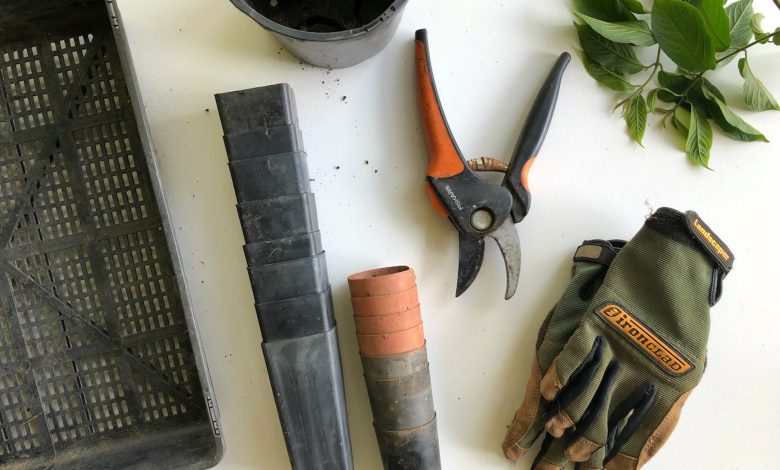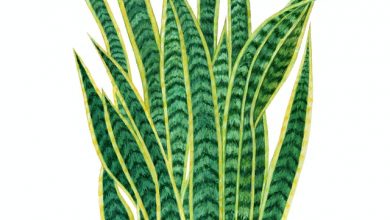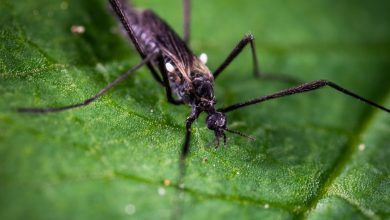20 Most Essential Tips for Garden Maintenance

A beautiful garden is one of the best ways to create curb appeal for a home. Be prepared though – a great garden takes a lot of work. Weeds need to be removed, the soil needs to be kept healthy, and plants need to be pruned. If you are new to gardening or owning a home, this can all be overwhelming. If you know gardening is not right for you, hire a professional to maintain your yard. However, remember that it is okay to take your time and learn as you go. You may make mistakes, but gardening can be very forgiving. In this article, we discuss 20 tips for maintaining a healthy garden.
Follow these suggestions, and you may find maintaining your yard is not as overwhelming as you think.
Water Regularly
Plants do much better when they receive consistent water. Though they do not require water every single day, watering on a regular schedule helps them thrive. A thorough watering every three to four days is sufficient, depending on your climate. Plants should be watered at the base, not their leaves. The goal is for the water to reach its root system. Installing an irrigation system in your garden in the very best way to ensure proper water distribution. However, irrigation is expensive, so an alternative method may be necessary. Try running drip hoses throughout the garden. They, too, release water right at the base of the plant. Even if neither of these options work for you, watering plants regularly is one the best ways to ensure your garden really pops.
Weed Consistently
There is nothing quite like the sight of an exquisite garden on a warm summer day. The beauty of a stunning array of orange, purple, and yellow flowers can be quickly ruined when taken over by weeds. Weeding is one of the most time consuming and frustrating maintenance requirements of gardening. Just when you think you got them all, one more weed pops up. The best way to deal with weeds is to do it regularly. Removing weeds periodically helps reduce the amount of time you need to spend each week doing yard work. In the heat of the summer, once every two weeks is usually a good schedule. In the spring, when plants are in high growth, once a week may be necessary. Be careful though, as some weeds may come across as beautiful and part of the garden; however, they can do more damage to your garden than you realize.
Maintain Edges
Edges are the division between a garden and another landscape feature. Typically, this is a lawn, but it would also include hard surfaces and water features. Maintaining clean, crisp edges make a garden very attractive to the eye. They act as a border to delineate the change in the landscape. Maintaining the edges also helps to keep plants from spreading into unwanted places. For example, grass can quickly spread into the garden. Ground cover plants can also easily spread over hard surfaces. Doing your best to contain plants into the areas they belong keeps your garden looking top-notch.
Cultivate Soil Regularly
Soil health and maintenance is just as important as plant health. Light and fluffy surface soil have a way of looking alive and healthy. The best way to achieve this is through cultivating. Part of your garden work should be regularly turning the exposed soil. This helps to allow air and water to move freely from the surface through to the plants’ root systems. Most home improvement or gardening stores sell a wide array of cultivating tools. Some of the more expensive cultivators, such as a loop hoe or dutch hoe, are also weeding tools. Learn to use the device properly, and you can weed and cultivate it at the same time. Garden tools like this can help minimize the number of tools in your shed, while also providing a multifunctional approach to maintaining your garden.
Deadhead
Deadheading is the removal of faded flowers from woody, herbaceous plants. Spent flowers left on plants draw energy from the plants’ roots. The plant still tries to keep that flower alive, and therefore the plant spends less energy on the healthier parts. In addition, a plant sporting dead flowers does not look very good in the garden. Regularly remove faded flowers to maintain plant health and keep up aesthetic appeal. For some perennial plants and annual flowers, this is as simple as using your hands to pinch off the flower. Woody plants likely need to be cleaned up with pruners. Your goal is to get rid of the dead without harming the rest of the plant. Any cuts made should be neat and clean.

Cut Back Dying Foliage
Foliage may die back on a plant throughout the growing season. This is entirely normal. It could be circumstantial due to growing conditions, or it may be because the old growth is making way for new growth. Cut off any yellow or brown foliage when you see it. This helps the plant to direct its energy into the healthier parts of the plant. It also helps to keep the garden looking its best. The same is true here for woody plants, especially evergreens. For most evergreens, parts that brown and die won’t become green again. Get rid of the dead right away, and the plant can produce new growth in its place. The color brown is an eyesore in the garden. Keep it away as best you can.
Control Spread of Plants
Many plants grow outwards over time. Some plants have a nasty habit of spreading outwards rapidly, choking out other plants if not kept in check. Mint plants are a great example of this. It is best practice to remove the parts of plants that spread into the unwanted territory as soon as possible. Be sure to dig them outright from the roots. Letting plants spread for too long means their unwanted roots grow amongst desirable roots. If this happens, good plants may need to be sacrificed in order to control the harmful plants. Avoid this by regularly monitoring the growth of spreading plants.
Plants can grow and unexpectedly spread which is why, when you start the gardening process, remember it is going to require you taking the time to monitor and put in some hard work. If you want a pristine, catalogue worthy garden, you are going to need to ensure that the weeds, flowers, and everything in between are maintained.
Prune and Shape Shrubs
One of the best characteristics of shrubs is that they are low maintenance plants. All they need is pruning and shaping once a year. Pruning at the right time of season ensures the plant performs to its fullest. The time of year to prune runs in accordance with when the plant sets its buds. For example, shrubs with spring flowers should be pruned and shaped as soon as their flowers fade, usually late spring or early summer. If they were to be pruned in the fall, all of their buds would be cut off, and therefore the plant could not produce any blooms come spring. Summer and fall flowering plants should be pruned in the spring or fall, either before or after flowering.
Want to get creative? Did you know that you can shape shrubs to look like an animal or any design you would like? If you aren’t confident in your shaping skills, you can hire a professional company to shape your shrubs – some landscaping companies can do this, but it may cost a premium.
Mulch Every One to Two Years
Adding mulch to the garden is an excellent choice. There are so many different kinds and colors that it is easy to find one that matches your home. Do some research before you choose what to install. Every mulch adds color to your soil. These colors range from reds, to browns, to golds, to blacks. But not every mulch is made the same. A good mulch can retain moisture, choke out weeds, and add nutrients to the soil below. These types of mulch help to reduce the amount of work it takes to maintain a garden. Do your research and consider spending a little more on a better product for better results. Not only is it important to consider the different types of mulch, but be careful to not be swayed by their appearance. You may think red mulch looks good in your garden, but the benefits may not be what you and your garden needs.
Divide Large Perennials
Many perennials can grow quite large over time. This means they may spread into other plants or lose their shape as they grow in all directions. Keep perennials under control by dividing them. This is done by digging up the unwanted sections by the roots. The split portion of the plant can be replanted in other areas of the garden. Having the same plant in other spots helps to make a garden look consistent and cohesive. If you have no room in the garden, consider giving the transplants to a neighbor or friend. Not only is it good to share your perennials, but depending on the plant, it may be possible to have your plants potted inside. Who says you can’t bring the outdoors inside?
Remove Fallen Leaves from Inside of Plants
Fall is one of the most beautiful times of the year. Unfortunately, once those colored leaves fall, it can create quite a mess. Most of us know that leaves should be cleaned up from the surface of the lawn and garden. But it is just as essential to clean the leaves out of the inside of plants. Shrubs tend to get the worst of it. The wind blows leaves into their woody stems where they get stuck and build up. Leaves in plants are aesthetically displeasing and can be a breeding ground for pests. Use a leaf blower to get the leaves out or use your hands to pull out as much of the leaf debris as possible.
Complete a Fall Garden Put Down
One of the best gardening tips is to cut back your perennials in the fall. At the end of the growing season, many plants die back to the ground. In the fall, it is recommended to cut back all the foliage off these plants. Dead foliage leftover time can harbor pests and diseases, so it is best to get rid of it as soon as possible. During your put down, you should also remove any end of season weeds and fallen leaves. Putting down your garden correctly in the fall makes for less work in the spring.

Limb Up Trees
As trees grow, their branches become more abundant and heavier. This weight tends to make the branches hang lower. Low hanging branches are a problem for two reasons. Firstly, low branches can block access areas of your yard. Secondly, branches can cast shade onto the areas below. The branches become a problem when they block light from full sun plants. When you notice this happening, cut back the limbs of the trees to allow more light to flood in. Cuts should be nice and clean; otherwise, pests and diseases can form in the exposed areas.
Also, try and make cuts in the crooks of branches. This way, the cuts are less noticeable, and branches don’t stick out at odd angles.
Be careful if you are doing tree work on your own. Most of the work is done above your head, so it can be inherently dangerous. If you are at all unsure, hire a professional. Safety should be your priority.
Regularly Remove Weed from Hard Surfaces
Hard surfaces are not part of the garden, but they are part of the landscape. Maintaining the aesthetic of hardscapes helps to make the garden look even better. Weeds have a nasty tendency of popping up in any available crack. Remove these weeds when they form to keep your yard looking its best. Horticultural vinegar is a natural chemical that can be sprayed on weeds in hardscapes. If you prefer not to spray anything, you can use a garden knife to dig out each individual weed by the root. Or try using a line trimmer to cut the weeds back to the ground. This won’t remove the root, but it is a quick way to make the weeds look as though they have been taken care of.
Complete a Spring Garden Start-up
Start the growing season off right. Get out into your garden as soon as the ground can be worked. Even if you did a comprehensive fall garden put down, there is still going to be work to do in the spring. Over the winter, leaves and other debris blow into the garden. Many trees have small branches break off. Some shrubs have wood that dies over the cold months. Take care of all these things as soon as possible. Also, cultivate your soil as early as possible. You have access to way more soil surface when plants aren’t in full growth. Getting your garden off to a good start helps to make the growing season that much better. Plus, it feels great to get back outside to enjoy the mild temperatures.
Sweep off Hard Surfaces
Again, hardscapes are not part of the garden, but they do add to the look of your yard. Throughout the season, hard surfaces tend to be a place where debris builds up. Fall leaves, grass clippings, dirt, and animal trackings left around the yard make a place look untidy. Use a leaf blower or a broom to sweep off your deck and patio regularly. Keeping the hard surfaces of your yard clean and free from yard trimmings just provides a nice clean surface because no one likes a messy garden.
Fertilize Plants
Plants need nutrients in order to grow. Many of these come from the existing soil in the garden. While this is generally enough to keep the plant healthy, it is not necessarily enough to make them really grow and produce lots of blooms. Fertilizing can be a tricky game. If you over fertilize, the plants may burn. Use the wrong fertilizer, and you won’t get the results you are looking for. If you are unsure, hire a professional. If you are open to trying it yourself, purchase fertilizer from a reputable garden nursery. The staff here are generally horticulturalists and are able to provide reliable advice. Not only are they able to provide recommendations, but they can make sure that the type of soil you purchase is within your budget, as there are an array of price points for fertilizers.
Remove Grass Clippings from Gardens
Clippings tend to fly everywhere when a lawn gets trimmed. The clippings have a way of ending up exactly where we don’t want them. When they land in the garden, it is essential to clean them up. Not only do they look messy, but when left unattended, the clippings build up. The clippings are a great place for pests to hide and procreate. Rake out the clippings or blow them back into the lawn to disperse them. If you go with a professional company, they can ensure that all the grass clippings are removed.
Replace Dead Plants
It is an unfortunate truth that not all plants survive. Whether it be a new planting that doesn’t take or an old plant that has lived out its life, it is important to remove dead plants from the garden. Though they are not necessarily harmful, they are an eyesore. Getting rid of the dead plants allows for new plants to be installed. These new voids can be a great space for divided perennials. Or if you aren’t ready to commit to something, try planting annual flowers here. Annuals flower all season, so they can provide great color and do not require as much maintenance as flowers that are seasonal. If you don’t remove dead plants, it can make the process of gardening much more cumbersome and frustrating; therefore, take the time to remove plants that have not thrived in your garden.
Mow the Lawn
The lawn is obviously not part of the garden, but it is essential to most residential landscapes. Cutting your lawn regularly helps keep your property looking its best. Pay attention to the edges of the lawn where it meets the garden. When grass here grows tall, it makes the whole property look messy. Generally, a lawnmower cannot reach right to the edges of the lawn. Use a line trimmer to trim the sides of the grass for the best result. If you are under a time crunch or don’t have the necessary tools to mow the lawn – consider hiring a landscaping company. They can mow the lawn but also provide any other lawn maintenance necessary.

Garden maintenance is an on-going job throughout the entire growing season. The majority of the work needs to be done in the spring and fall. Having a regular gardening schedule and plan helps to reduce the amount of work that needs to be done each week. While an edible garden takes work, it is also very rewarding. Your hard work pays off when friends and neighbors make comments about how great your yard looks. Take pride in your home. It is your most significant investment and needs to be nurtured.
Don’t feel overwhelmed or discouraged by the work that goes into maintaining and creating a garden – whether it’s a floral garden or a vegetable garden, there are so many possibilities and benefits. From being a form of de-stressing, to an opportunity to grow and harvest your own vegetables, these 20 garden tips are meant to help you get started on something that is sure to be rewarding.



